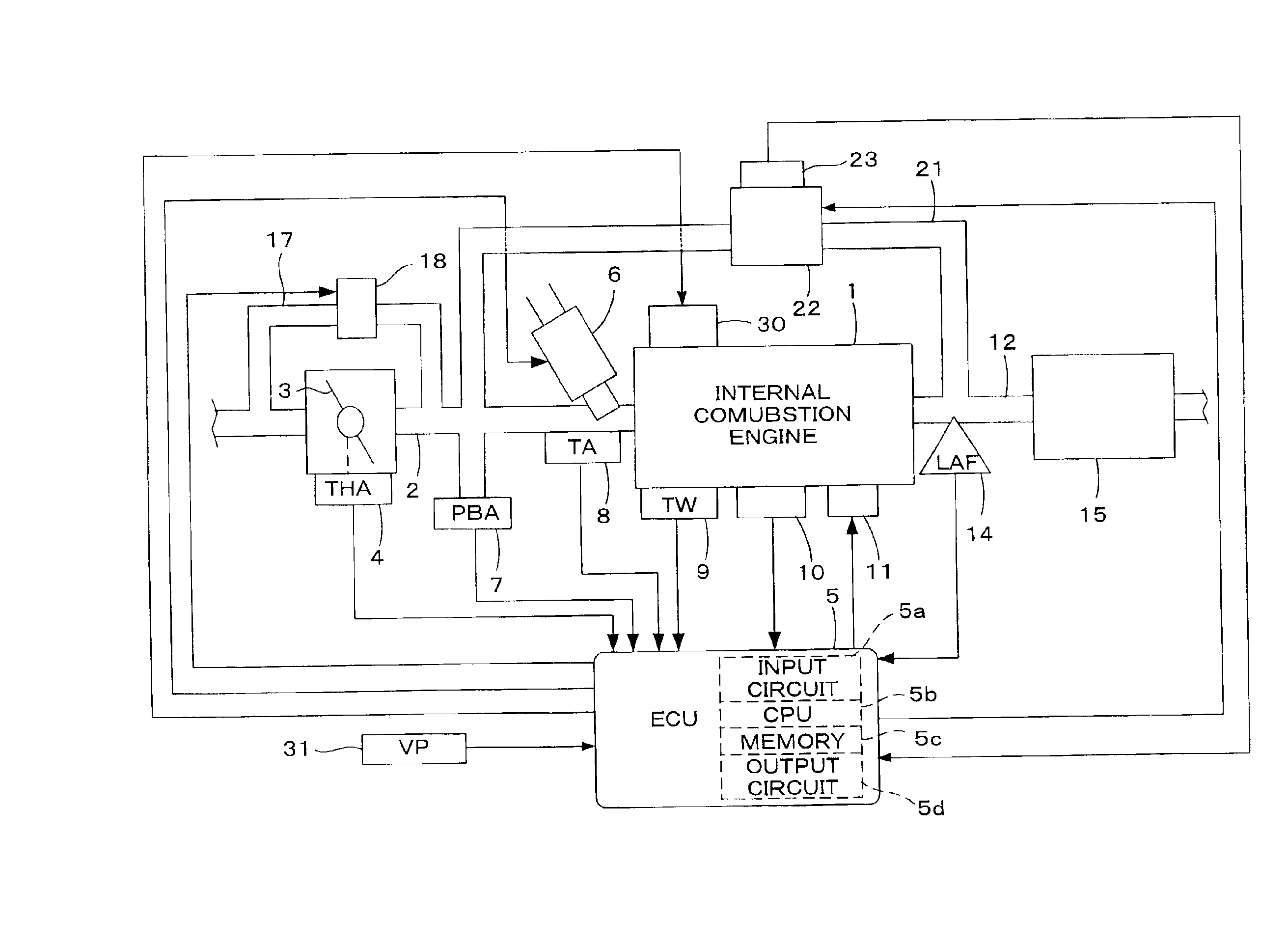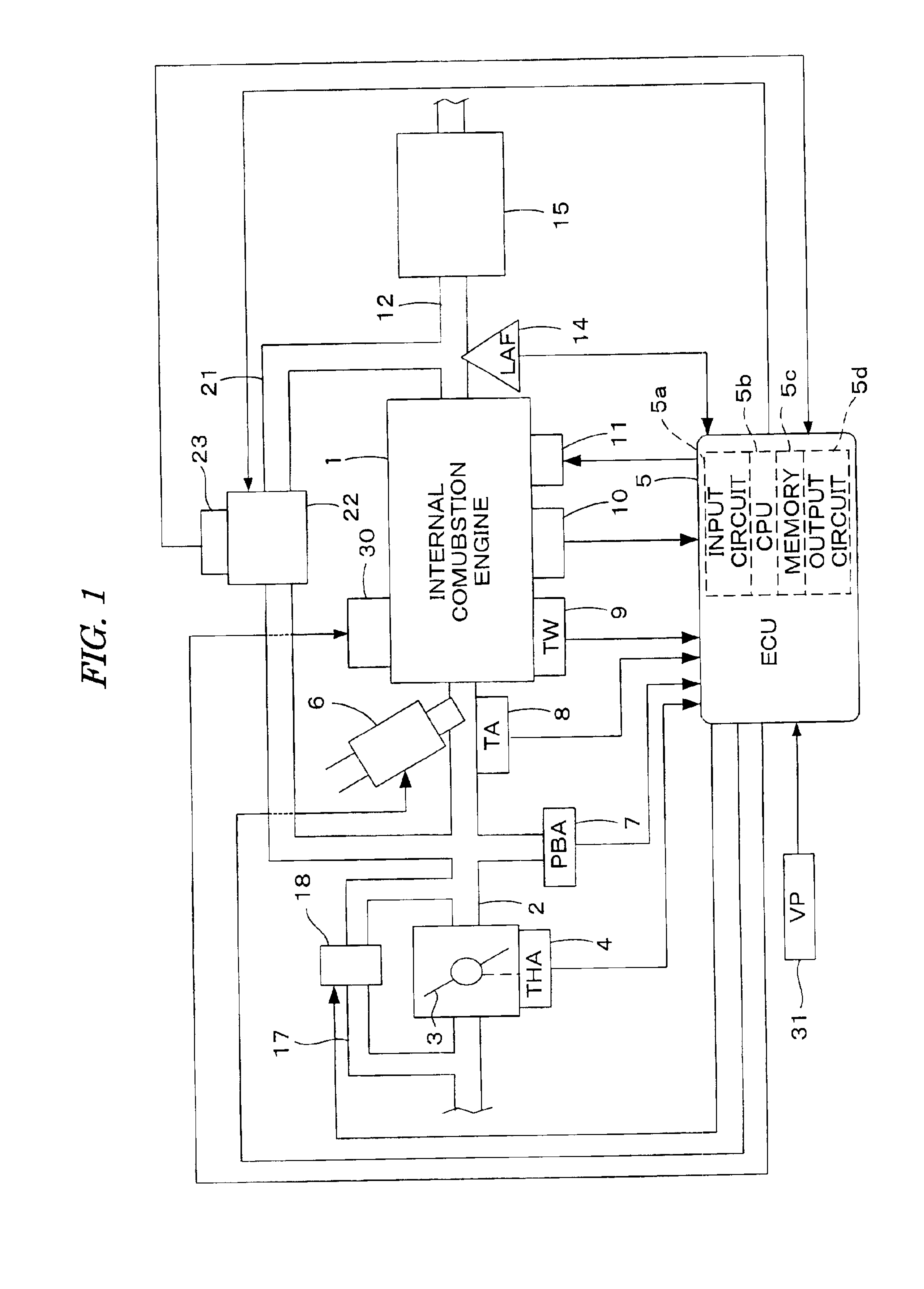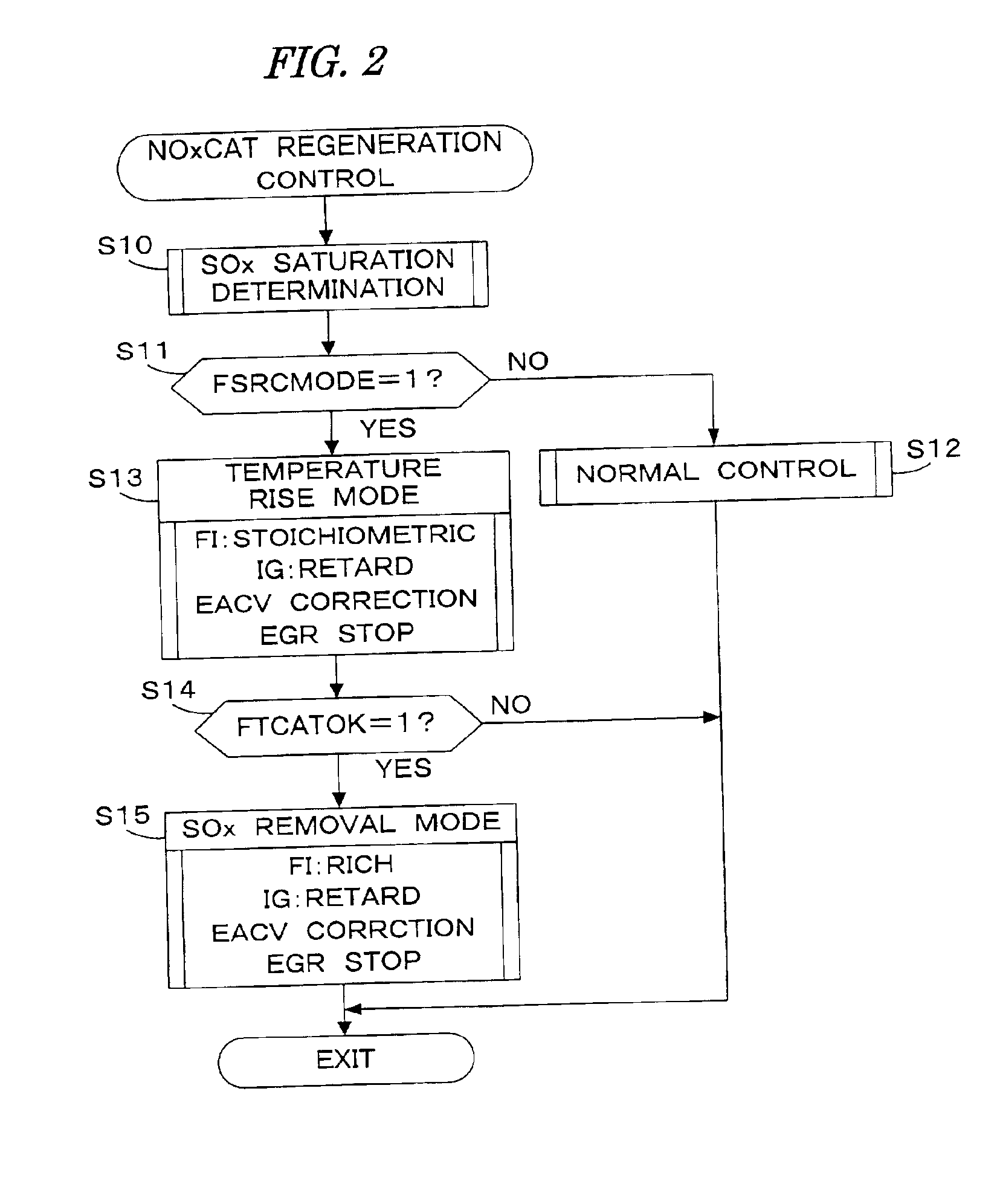Exhaust emission control system for internal combustion engine
a technology of exhaust emission control and internal combustion engine, which is applied in electrical control, lighting and heating apparatus, separation processes, etc., can solve the problems of deviating from the optimum timing of regeneration process timing and inaccurate estimation of sulfur oxide absorbed in the nox removal devi
- Summary
- Abstract
- Description
- Claims
- Application Information
AI Technical Summary
Benefits of technology
Problems solved by technology
Method used
Image
Examples
Embodiment Construction
[0023]A preferred embodiment of the present invention will now be described with reference to the drawings.
[0024]Referring to FIG. 1, there is schematically shown a general configuration of an internal combustion engine (which will be hereinafter referred to as “engine”) and a control system therefor, including an exhaust emission control system according to a preferred embodiment of the present invention. The engine is a four-cylinder engine 1, for example, and has an intake pipe 2 provided with a throttle valve 3. A throttle valve opening (THA) sensor 4 is connected to the throttle valve 3, so as to output an electrical signal corresponding to an opening angle of the throttle valve 3 and to supply the electrical signal to an electronic control unit (which will be hereinafter referred to as “ECU”) 5 for controlling the engine 1.
[0025]An auxiliary air passage 17 bypasses the throttle valve 3 and is connected to the intake pipe 2. The auxiliary air passage 17 is provided with an auxi...
PUM
| Property | Measurement | Unit |
|---|---|---|
| temperature | aaaaa | aaaaa |
| temperature | aaaaa | aaaaa |
| crank angle period | aaaaa | aaaaa |
Abstract
Description
Claims
Application Information
 Login to View More
Login to View More - R&D
- Intellectual Property
- Life Sciences
- Materials
- Tech Scout
- Unparalleled Data Quality
- Higher Quality Content
- 60% Fewer Hallucinations
Browse by: Latest US Patents, China's latest patents, Technical Efficacy Thesaurus, Application Domain, Technology Topic, Popular Technical Reports.
© 2025 PatSnap. All rights reserved.Legal|Privacy policy|Modern Slavery Act Transparency Statement|Sitemap|About US| Contact US: help@patsnap.com



